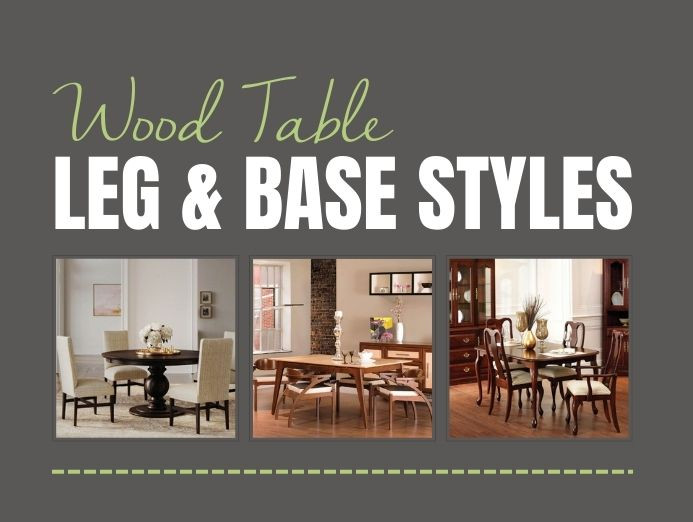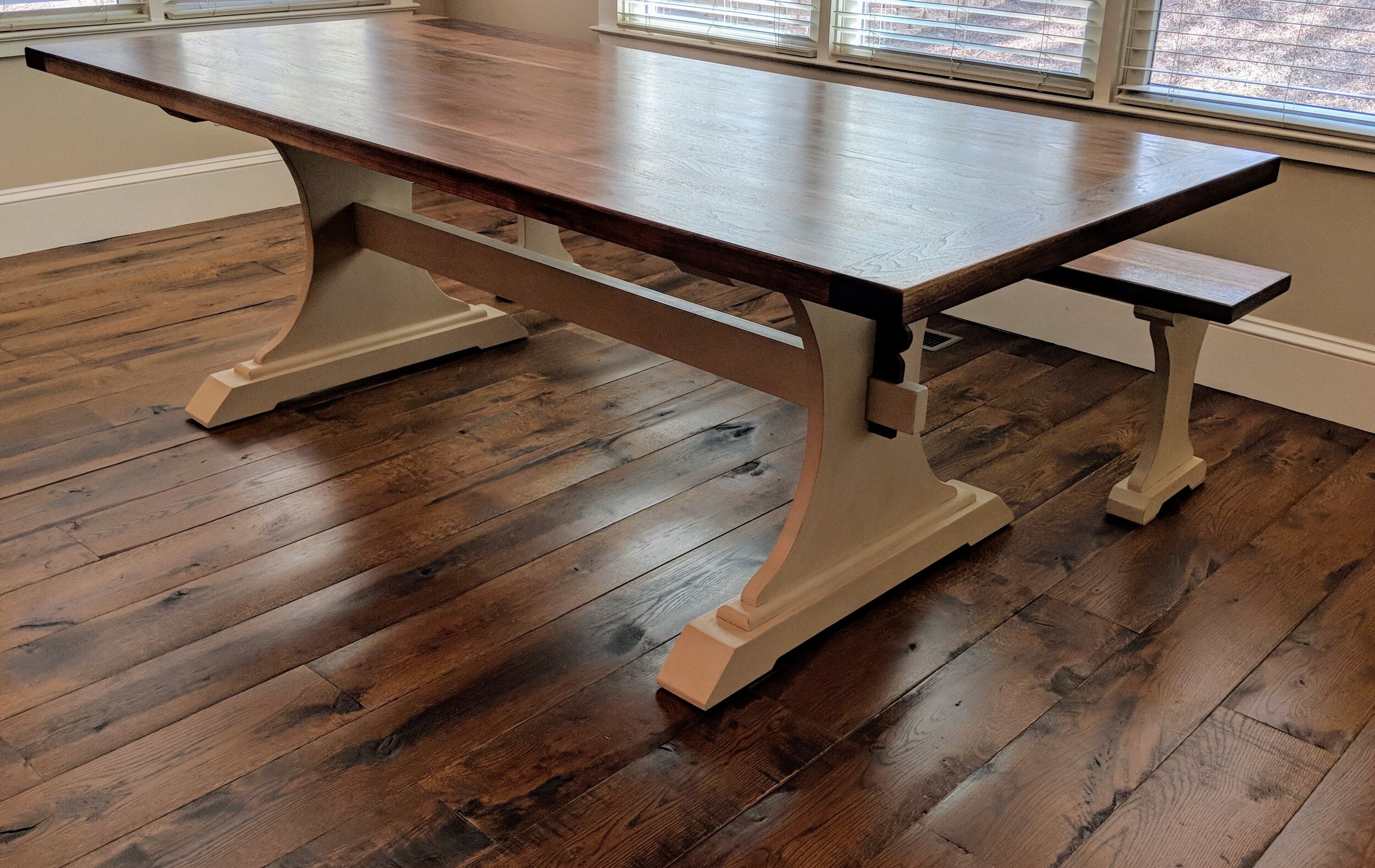Simple Steps to Replacing Old Dining Room Table Legs with New Ones
Simple Steps to Replacing Old Dining Room Table Legs with New Ones
Blog Article
Exactly How to Select the Perfect Dining-room Table Legs for Your Home Decoration
Selecting the ideal dining-room table legs is a nuanced procedure that calls for mindful factor to consider of numerous elements, including your space restrictions, visual choices, and practical demands. The interplay between designs, dimensions, and products can substantially influence the ambiance of your eating location, making it vital to approach this choice carefully. As you ponder the myriad choices available, it ends up being clear that the best option expands beyond mere look; it can enhance your total dining experience. What elements should you prioritize to ensure your option enhances your home's one-of-a-kind character?
Assess Your Dining Area
Assessing your dining space is critical for choosing the right table legs that enhance both looks and functionality. Begin by gauging the dimensions of your eating area, consisting of ceiling elevation, flooring space, and distance to other furniture. This info will assist establish the ideal size and height of your table, which directly influences the selection of table legs.
Next, think about the design and format of your dining room. For instance, an open-concept design might gain from table legs that use aesthetic lightness, such as slender metal or acrylic alternatives. Conversely, an extra typical setup might require tough wooden legs that give a sense of durability.
Assess the existing color combination and products in your eating location. Harmonizing the table legs with these aspects develops a cohesive look that improves the overall decoration.
Eventually, a detailed assessment of your dining room will certainly guide you in making an informed choice, guaranteeing that your table legs not just improve the aesthetic appeal yet also serve practical purposes.
Consider Your Design Preferences
When selecting dining-room table legs, it is vital to mirror on your personal design choices, as they significantly affect the total aesthetic of your eating space. Your choice of table legs can either enhance or contrast with existing decor, making it important to straighten them with your favored interior design theme.
If your home leans in the direction of a contemporary visual, consider smooth steel or minimal wooden legs that provide a clean, uncluttered look. For an extra traditional technique, ornate wooden legs with elaborate carvings can include a touch of sophistication and class. Industrial styles take advantage of robust, resources such as reclaimed wood and steel combinations, showing a rugged charm.
In addition, farmhouse and rustic styles typically prefer durable, chunky legs that evoke a feeling of heat and comfort. Conversely, if your design is diverse, you might pick non-traditional shapes or a mix of materials to produce visual rate of interest.

Evaluate Material Options
The option of product for eating room table legs plays an essential role in both resilience and aesthetic appeal. Usual materials include wood, steel, and composite alternatives, each offering distinct features that can affect the general appearance and long life of your table.
Timber is a traditional choice, known for its warmth and flexibility. Hardwoods like oak and walnut supply remarkable toughness and can be finished in site different spots to match any type of design. Softwoods like yearn are extra vulnerable to scrapes and damages, making them less excellent for high-traffic locations.
Metal legs, often crafted from steel or aluminum, radiate modernity and commercial charm. They are highly sturdy and immune to use, making them ideal for households with youngsters or regular gatherings (dining room table legs). Furthermore, steel can be finished in various colors, enhancing the customization opportunities
Composite products, such as MDF or laminate, offer price and varied designs. While normally much less long lasting than solid wood or steel, they can still provide a fashionable appearance and are frequently very easy to keep.
Inevitably, the product you pick should straighten with your lifestyle, visual preferences, and the degree of usage your table will experience.
Determine Elevation and Dimension
Choosing the suitable elevation and size for your dining-room table is important for both capability and convenience. The standard height for eating tables commonly varies from 28 to 30 inches, enabling adequate legroom for the majority of people when seated. Nonetheless, it is essential to think about the dimensions of your eating room and the sorts of chairs you prepare to make use of.

Additionally, take into consideration the proportions of your dining area. A bigger table in a large area can produce a grand setting, while a smaller table works well in even more intimate settings. Ultimately, the best elevation and size will balance with your general design and boost the eating experience for you and your visitors.
Explore Personalization Opportunities

In addition, the layout of the legs can be customized to fit numerous styles, such as rustic, modern-day, or commercial. For example, conical legs can stimulate a mid-century modern-day feel, while chunky, block-style legs may reverberate with conventional or farmhouse design.
Property owners can also discover shade coatings, from natural timber stains to repaint, allowing them to match or contrast with the tabletop and bordering decoration.
Furthermore, leg elevation can be adapted to fit certain seating arrangements or individual choices, enhancing both comfort and performance.
Last but not least, one-of-a-kind embellishments, such as carvings or decorative braces, can further customize the table legs, making the dining experience not just a dish yet a declaration item in the home. By taking into consideration these personalization choices, home owners can create a dining-room table that genuinely shows their originality.
Final Thought
Picking the ideal eating space table legs needs mindful consideration of various variables, consisting of the measurements of the dining space, design choices, material resilience, and wanted height. Customization options better enhance the capacity to attain a natural visual that complements the overall decor. By methodically examining these aspects, house owners can make certain that the chosen table legs not just meet useful needs but likewise add favorably to the dining experience and ambiance of the home.
Picking the suitable eating space table legs is a nuanced procedure that requires cautious consideration of this website numerous elements, including your room constraints, aesthetic choices, and practical demands.Assessing your dining area is essential for selecting the right table legs that complement both looks and capability.When establishing size, gauge the location where the table will certainly be positioned to guarantee it fits conveniently, permitting for at least 36 inches of clearance around the table for easy motion. A larger table in a spacious location can produce a grand atmosphere, while a smaller sized table functions well in more intimate setups.Selecting the suitable eating area table legs needs careful consideration of numerous factors, consisting of the dimensions of the eating area, design preferences, product toughness, and desired height.
Report this page